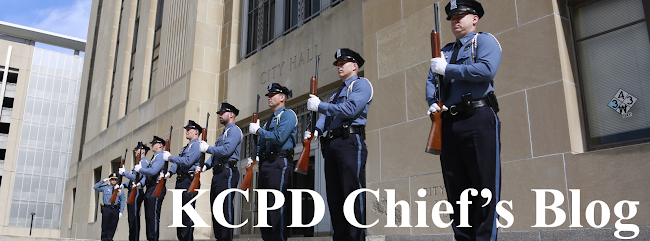Our total number of budgeted law enforcement positions is 1,438. However, we haven’t been at that level since 2008. At this time last year, we had 1,395 law enforcement officers. We now have 1,358. So we have 37 fewer officers than we did at this time last year, for a total of 80 law enforcement vacancies.
We typically make up for attrition through two police Academy classes per year, composed of between 40 and 50 recruits. We have 10 recruits currently in the Academy, and no other classes scheduled at this time to stay within our budget.
The majority of our law enforcement staff is in the Patrol Bureau. These are the officers you see on the streets. That Bureau has 63 law enforcement vacancies right now, compared to 74 at the beginning of 2014. That’s not quite comparing apples to oranges, though, because the Patrol Bureau gave up 25 spots later in 2014 to form the Violent Crimes Enforcement Division. This group now is assigned to the Investigations Bureau and is charged with seeking out individuals who are identified as being involved in violent criminal activity. The Violent Crimes Enforcement Division Officers essentially provide a proactive patrol function. They don’t usually answer 911 calls for service, however.
The Patrol Bureau also is down 20 civilian staff members, who serve in positions such as desk clerk and detention officer. Sometimes, officers have to be pulled in off the streets to fill these positions. Overall, our department has 112 civilian vacancies, compared to 79 at this time last year.
Some patrol divisions are hurting more than others. North Patrol has 13 vacancies, the greatest of any division. Each patrol division commander must engage in a delicate balancing act to ensure there are enough officers on duty 24 hours a day to answer all the calls for service in their division in a timely manner. This can involve everything from overtime to using reserve officers. We have 11 more reserve officers right now than we did at this time last year, for a total of 37. Most reserves are officers who have resigned or retired from KCPD. They keep current on training as any other officer would, and they work on a volunteer basis. Reserves must work a minimum of 288 hours a year, which equates to about 6 hours weekly. Additionally, every Friday, Saturday and Sunday night, an extra four officers and a sergeant are assigned to hot spot areas in the East, Central, and Metro patrol divisions. Every sergeant, detective and officer on this department not in an under-cover assignment must work six days annually in a hot spot assignment.
Could we use more officers? Certainly. Being fully staffed could lead to reduced response times and allow officers greater flexibility in time off and for proactive work. But we are good stewards of the resources we have. We are doing everything we can to ensure the community’s needs for safety and security are met, and we appreciate residents’ cooperation with us in doing so.
Send comments to kcpdchiefblog@kcpd.org.
